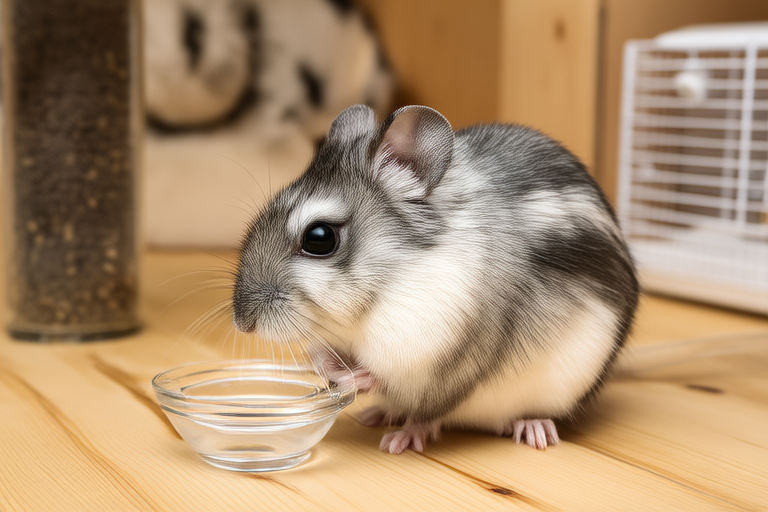Nighttime Noises & Nibbles: Understanding Chinchilla Behavior
Welcome to an exploration into the fascinating world of chinchillas. These adorable rodents, native to the Andes Mountains in South America, have unique behaviors that intrigue many pet owners. This article delves deep into understanding why chinchillas are most active at night, what they do during these hours, and how their behaviors can be managed or appreciated by their human companions.
The Nocturnal Nature of Chinchillas
Chinchillas are crepuscular animals, meaning they are most active during twilight periods, both dawn and dusk. However, many chinchillas exhibit strong nocturnal tendencies, being most lively during the night. This behavior is deeply rooted in their evolutionary history. In the wild, chinchillas face various predators such as birds of prey, foxes, and wild cats. Being primarily active at night helps them avoid these threats while also capitalizing on cooler temperatures for their thick fur.
Common Nighttime Behaviors
During their peak activity times, chinchillas engage in a variety of behaviors. One of the most noticeable is their increased movement around their enclosures. They leap from one perch to another, often performing acrobatic feats that showcase their agility. Chinchillas also spend considerable time grooming themselves and each other, a behavior known as allogrooming, which strengthens social bonds within groups.
Another common sight is their foraging behavior. Chinchillas will search for food throughout their enclosure, even if it’s just snacks left by their owners. This foraging mimics their natural scavenging for seeds, grasses, and other plant matter in their mountainous habitats.
Noises in the Night
Owners often find themselves wondering about the various sounds their chinchillas make during the night. These noises serve several purposes and can be quite diverse. Chinchillas communicate through vocalizations like chirping, squeaking, and even purring. Chirps might signal excitement or distress, while purring indicates contentment.
Squeaks can range from soft to loud depending on the situation. Sometimes, these noises are a result of discomfort or pain, especially if the chinchilla is ill or injured. It’s crucial for owners to learn to differentiate between normal communication and signs of distress.
Nibbling Habits
Nibbling is another hallmark of chinchilla behavior. Chinchillas chew on everything from toys to cage bars, which is more than just a pastime; it’s essential for their dental health. Their teeth grow continuously throughout their lives, and chewing helps keep them worn down to a manageable length. Without sufficient chewing opportunities, chinchillas risk developing overgrown teeth, leading to serious health issues.
In addition to maintaining dental health, nibbling also serves exploratory purposes. Chinchillas investigate their surroundings by gnawing on objects, which can help them understand their environment better. Providing safe, appropriate items for them to chew on is vital for both their mental and physical well-being.
Reflecting Natural Environments
Understanding why chinchillas behave the way they do during the night requires looking at their natural environments. The high-altitude Andean regions where chinchillas live offer sparse vegetation and rocky terrains. This environment has shaped their behaviors, including their nocturnal activity patterns and their need for constant chewing.
The cool, dry climate of their native habitat also influences their behaviors. Chinchillas are highly sensitive to heat and humidity, which is why they are most active when temperatures are cooler. In captivity, it’s important to maintain a temperature range of 64-70°F (18-21°C) with low humidity levels to mimic their natural environment and ensure their comfort.
Tips for Owners
Managing chinchilla behaviors effectively involves creating an enriching and stimulating environment. Provide plenty of toys that encourage physical activity and mental engagement. Tunnels, hammocks, and wooden chew toys are excellent choices. Additionally, ensure there are multiple levels in their enclosure to allow for climbing and jumping.
Establishing a routine can also help manage nighttime activities. Feeding your chinchilla at the same time each day can help regulate their internal clock, potentially reducing their nocturnal activity. However, it’s important not to deprive them of necessary sleep or disrupt their natural rhythms too much.
If you notice excessive noise or unusual behaviors, consult a veterinarian. Health issues could be the underlying cause, and early intervention can prevent more serious problems.
Conclusion
Nighttime noises and nibbling are integral parts of chinchilla behavior, reflecting their natural instincts and environmental adaptations. By understanding these behaviors, owners can provide better care for their pets and enjoy a deeper bond with them. Remember, every chinchilla is unique, so patience and observation are key to tailoring care to individual needs.

